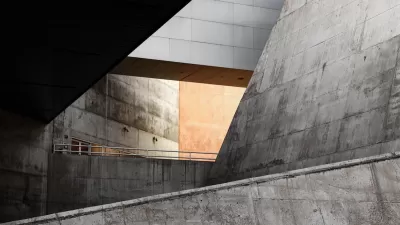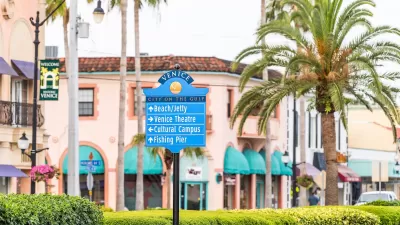In an extended discussion, Keith Eggener examines what it means for a work of architecture to be "naturally" American, and why looking at modern American styles through an intensively regional lens may be unhelpful.

Basing his essay on a Portland Art Museum exhibit showcasing the work of architect John Yeon, Keith Eggener delves deeply into American architectural identity, both national and regional.
Eggener traces the idea of distinctively American architecture through the early 20th century, a period when international styles interacted with homegrown sensibilities in the work of pioneers like Frank Lloyd Wright. "Just as a foreign-born person may become naturalized when moving to a new country, so foreign-born architectural themes were being naturalized through their adaptation to American conditions."
In the post WWII period, Eggener writes, America's international predominance solidified its architectural reputation as the font of all things modern. But a parallel narrative around "regionalist" forms also emerged, centered on the suburbs. "It's notable [...] that the new regionalist architecture of mid-century America was limited almost exclusively to a single building type: the free-standing, private house."
Eggener goes on, "So it seems reasonable to ask: why does so much so-called regional modern architecture across the U.S. look so much like architecture found in regions other than its own?" Regional variation exists, but there's also a lot of architectural uniformity across the U.S. As Yeon put it, "Whether there is or is not a Northwest regional style of architecture is debatable, but what is certain is that lot of people want to think there is."
FULL STORY: A Fortuitous Shadow

Americans May Be Stuck — But Why?
Americans are moving a lot less than they once did, and that is a problem. While Yoni Applebaum, in his highly-publicized article Stuck, gets the reasons badly wrong, it's still important to ask: why are we moving so much less than before?

Using Old Oil and Gas Wells for Green Energy Storage
Penn State researchers have found that repurposing abandoned oil and gas wells for geothermal-assisted compressed-air energy storage can boost efficiency, reduce environmental risks, and support clean energy and job transitions.

Placekeeping: Setting a New Precedent for City Planners
How a preservation-based approach to redevelopment and urban design can prevent displacement and honor legacy communities.

Study: Maui’s Plan to Convert Vacation Rentals to Long-Term Housing Could Cause Nearly $1 Billion Economic Loss
The plan would reduce visitor accommodation by 25,% resulting in 1,900 jobs lost.

Idaho Data: Unexpected Vehicle Repairs Exacerbate Housing Instability, Eviction Risk
Over 21 percent of clients struggle with transportation barriers.

A Year-Long Investigation On Permanent Supportive Housing
The New York Times reveals what’s working and what’s not in the cornerstone of Housing First.
Urban Design for Planners 1: Software Tools
This six-course series explores essential urban design concepts using open source software and equips planners with the tools they need to participate fully in the urban design process.
Planning for Universal Design
Learn the tools for implementing Universal Design in planning regulations.
Heyer Gruel & Associates PA
City of Moreno Valley
Institute for Housing and Urban Development Studies (IHS)
City of Grandview
Harvard GSD Executive Education
Salt Lake City
NYU Wagner Graduate School of Public Service
City of Cambridge, Maryland





























